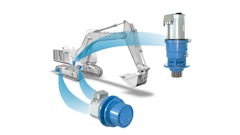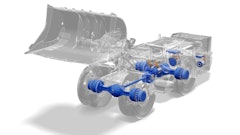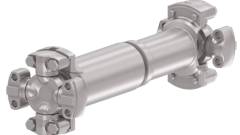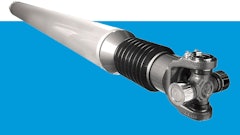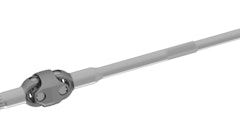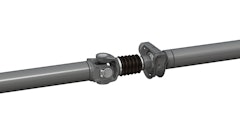
During the “How Flexible Shafts Solve Power Transmission Problems” live event on August 25, 2022, Jason LaFollette and Kevin Hause discussed the benefits of flexible shafts. These benefits include:
- Nearly eliminate the need for precise alignment between driving and driven shafts
- Enhance the absorption and isolation of vibration
- Increase ability to withstand shock of sudden load changes
- Lower initial assembly and maintenance costs without impacting safety
- Decrease the need for universal joints, pulleys and couplings
- Provide added freedom in mounting transmission system components
Following the presentation, attendees had several questions, which are answered below.
What are the maximum rpm and peak torque acceptable?
Though every application needs to be evaluated on its own merit, the general rule for a flexible shaft is a maximum of 10 horsepower (hp) or 50,000 rpm. The primary hp limiting factor is heat generation. The multiple wire layers in a flexible shaft interact with each other and create a lot of heat at high speeds, especially in a larger core. Some applications may use hollow cores to remove mass, but every application has a unique solution. Remember, hp is a function of torque and rpm. Reference:
torque (lb in) = hp x 63,000 / rpm
How does the life of a flexible shaft compare to a universal joint driveshaft?
A properly designed flexible shaft with the right torque capacity and all design characteristics taken into consideration should meet or exceed the life of a universal joint style driveshaft. A flexible shaft can have real benefits depending on the application and how aggressive the application is. One thing that can negatively affect a universal joint is shock load. Where shock loading may be detrimental to a universal joint, a flexible shaft may be able to withstand those loads. The multiple layers of wire allow the flexible shaft to act like a spring so it can absorb the load instead of having to withstand it.
Is it possible to apply a simulation for flexible shaft?
Simulation can be applied to a flexible shaft. However, doing so is difficult because the shaft is made of multiple entities. A ¾-inch shaft can contain up to 80 wires. Every time the shaft is bent in a different path or has a different load, the stress will change drastically. At Elliott Manufacturing, our go-to method for validation is testing. Since every application is different, we test to meet the needs of the specific application.









